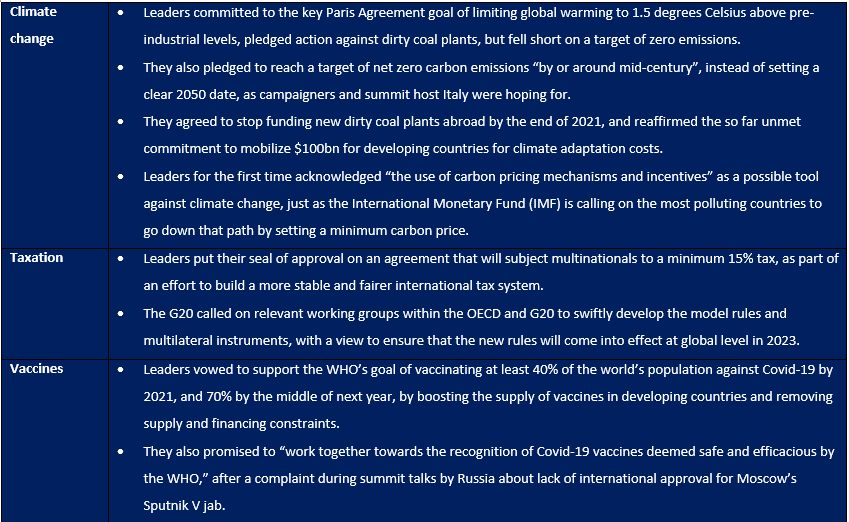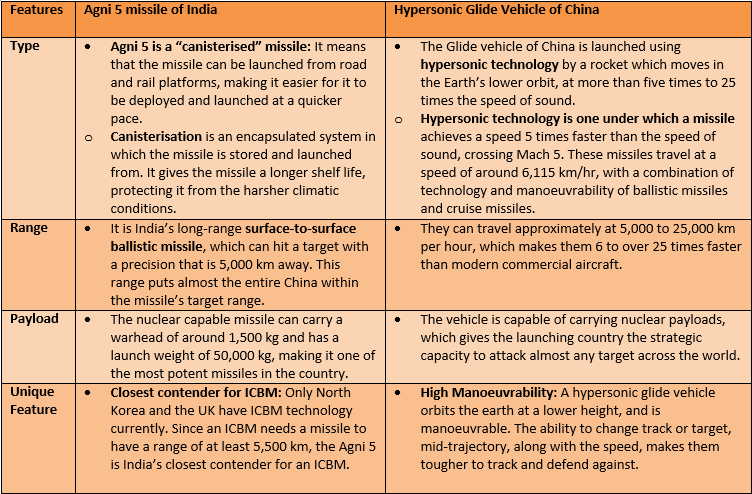Tuesday, 2nd November 2021
The New IT rules
In News
Ministry of Electronics and Information Technology’s (MeitY) has released ‘Frequently Asked Questions (FAQs)’ for the new Information Technology rules and intermediary guidelines.
About the News
- In February 25, 2021, MeitY published the new intermediary guidelines that needed to be followed by social media companies, OTT players, and also news websites, who were given three months’ time to comply with the rules.
- As per the government, focus of the rules is to empower ordinary users of social media for whom fake news and financial fraud are one of the huge challenges.
The FAQs share details on the following processes.
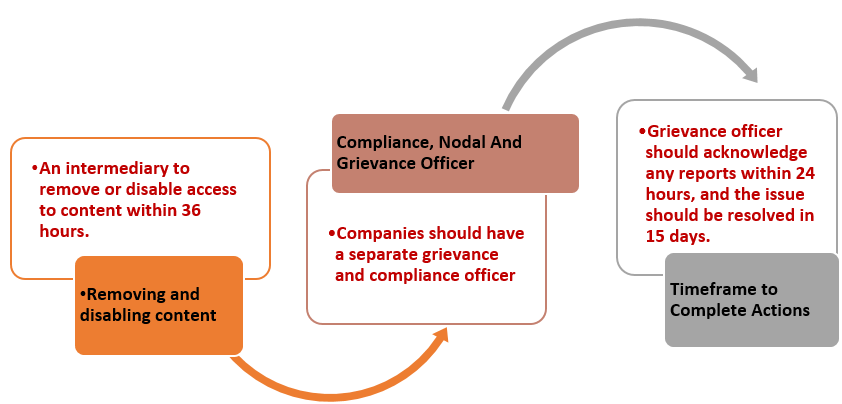
The Information Technology (IT) Rules, 2021
- Grievance Redressal: Users of social media platforms and OTT platforms would be empowered with a mechanism for redressal and timely resolution of their grievance, with the help of a Grievance Redressal Officer (GRO) who should be a resident in India.
- Renaming OTT: OTT platforms would be called as ‘publishers of online curated content’ under the new rules.
- Protection Mechanism: Special emphasis has been given on the protection of women and children from sexual offences, fake news and other misuse of the social media.
- Originator of Info: Identification of the “first originator of the information” would be required in case of an offence related to sovereignty and integrity of India.
- Compliance mechanism: A Chief Compliance Officer, a resident of India, will be appointed and that person shall be responsible for ensuring compliance with the Act and Rules.
- Code of Ethics: The OTT platforms, online news and digital media entities, on the other hand, would need to follow a Code of Ethics.
- Age verification mechanisms: OTT platforms would have to self-classify the content into five categories based on age and use parental locks for age above 13 or higher. They also need to include age verification mechanisms for content classified as ‘Adult’.
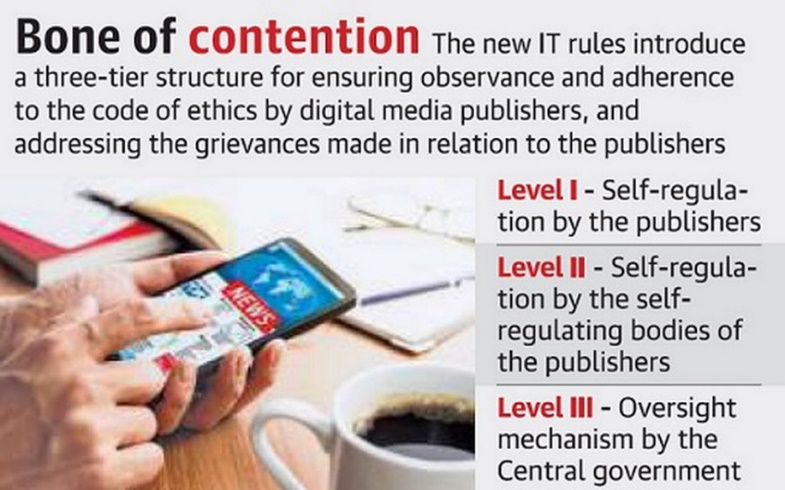
Sources:
Formalization of Economy
In News
Recently, SBI Ecowrap report on the share of informal economy in India was released.
Findings of the report
- Informal to Formal: Signalling a greater shift towards formalisation of the economy, the share of the large informal sector in overall economic activity dipped sharply in 2020-21 even as informal workers continue to bear the brunt of the pandemic’s adverse effects.
- Positive development: The share of the informal economy may have shrunk to no more than 20% of the economic output from about 52% in 2017-18, indicating a positive development amid the pandemic.
- Complete Formalization: There is almost 100% formalisation in finance, insurance and, to a large extent in real estate.
- Government Effort for Formalization: Various measures such as adoption of GST, enhanced digitalisation, demonetisation, emergence of the gig economy and scheme on the e-Shram portal have facilitated higher formalisation at much faster rate than that of most other nations.

Modes of Formalisation
- Through EPFO: Based on the monthly EPFO payroll report the report estimates almost 36.6 lakh jobs have been formalised till August 2021.
- Through e-Shram portal: India’s first national database of unorganised workers, on which 5.7 crore workers have registered until October 30.
- Sixty-two per cent of workers are in the 18-40 age group, and 92 per cent have a monthly income of less than Rs 10,000.
- State-wise data show that the top four states accounted for 72 per cent of total registrations, with West Bengal on top followed by Odisha and Uttar Pradesh.
- Through KCC card: The usage of KCC cards has increased significantly and it is estimated that Rs 4.6 lakh crore formalisation happened only through KCC route, with more marginalized farmers coming under the banking sector ambit through such usage.
- Through digital payments at petrol pumps: By assuming 50% of additional petrol and 25% of Diesel is paid by digital modes at Petrol, approx. Rs 23,686 crore has been formalized at petrol pumps.
- With the rise in economic activities, the consumption of petrol and diesel is estimated to increase by 7215 million liters in FY22.
About Informal Sector
- Around 93 per cent of India’s workforce is part of the informal economy (NSSO 2014).
- The informal sector in India consists of enterprises which are own account enterprises and operated by own account workers or unorganised enterprises employing hired workers. They are essentially proprietary and partnership enterprises.
- Although the pandemic has impacted all sectors, it has been felt more by the informal sector. While the formal sector is now back to pre-pandemic levels, the informal sector continues to struggle
Sources:
Pradhan Mantri Jan Arogya Yojana (PMJAY)
In News
NITI Aayog has suggested that the Pradhan Mantri Jan Arogya Yojana (PMJAY) scheme be extended to cover a section of people without health insurance.
About the News
- The report titled “Health Insurance for India’s Missing Middle", brought out the gaps in the health insurance coverage across the Indian population and offers solutions to address the situation.
- The report highlights the need for designing a low-cost comprehensive health insurance product for the missing middle.
- It primarily recognizes the policy issue of low financial protection for health for the missing middle segment and highlights health insurance as a potential pathway in addressing that.
- In doing so, the report offers a starting point for broader discussions on solutions, and specific products, to improve insurance coverage for the missing middle.
Highlights of the Report
- Population covered under PMJAY: The Ayushman Bharat – Pradhan Mantri Jan Arogya Yojana (AB-PMJAY) launched in 2018 and State Government extension schemes, provided comprehensive hospitalization cover to the bottom 50% of the population (70 crore individuals).
- Around 20% of the population (25 crore individuals) were covered through social health insurance, and private voluntary health insurance.
- The remaining 30% of the population has been devoid of health insurance.
- Suggested Models for increasing health insurance coverage: The report has recommended three models for increasing the health insurance coverage in the country.
- Model 1: Focuses on increasing consumer awareness of health insurance.
- Model 2: This deals with “developing a modified, standardized health insurance product” like ‘Arogya Sanjeevani’- launched by the Insurance Regulatory Development Authority of India (IRDAI) in April 2020.
- The modified product would have lower waiting periods and would also include out-patient benefits through a subscription model to increase the value of healthcare provided.
- Model 3: The third model expands government subsidized health insurance through the PMJAY scheme to a wider set of beneficiaries. This is the only model out of three which has fiscal implications for the Government.
- Short term and Long term targets:
- In the short-term, the target would be on expanding private voluntary insurance through commercial insurers.
- In the medium-term, the infrastructure of PMJAY and ESIC (Employee State Insurance Corporation) would be leveraged to allow voluntary contributions to a PMJAY plus product, or to ESIC’s existing medical benefits.
- In the long-term, expansion of PMJAY to the uncovered poorer segments of the missing middle will be considered.
- Sharing of Government Scheme data with the private insurance companies: Government databases such as National Food Security Act (NFSA), the Pradhan Mantri Kisan Samman Nidhi (PM-KISAN) for agricultural households etc can be shared with private insurers to ease the identification of and outreach to potential customers by insurers.
Sources:
India at CoP26
In News
The Indian Prime Minister has announced that India will achieve the target of net-zero emissions by 2070.
About the News
- The Pledges: This is the first time India has committed to net-zero emissions, a target that is particularly hard for developing nations that need to balance commitment to economic growth.
- India announced the five-point climate 'panchamrit', or pledge. As India set new and tougher targets for India, Modi called for a new financial target of $1 trillion, money that the developed countries would provide the developing countries.
- Raised NDCs: India also raised the Nationally Determined Contribution (NDC) of achieving 450 giga watt non-fossil energy capacity to 500 giga watt. In 2015, India had committed to achieving 40% of all installed electricity generation capacity to be from non-fossil energy sources by 2030.
- As per the new NDC, 50% of electricity generation will come from renewable energy sources by 2030 and the target of achieving 450 giga watt non-fossil energy capacity has been increased to 500 giga watt by 2030.
- Climate Finance: India raised the issue of Climate Finance by stressing that when developing countries are increasing the ambition of climate action, then the amount of climate finance cannot remain the same as it was at Paris.
- This indicates a stark reminder of the global compact that has been forged to address climate change, but one that has been consistently undermet.
- Financial support: India also announced support to the Africa Group's demand for $1 trillion in climate finance.
- LIFE framework: The PM of India also coined a new acronym LIFE as part of his vision to combat climate change. LIFE stands for Lifestyle for Environment.
- It can be given an institutional framework and become a mass movement for an environmentally conscious lifestyle.
- Resilient Infrastructure initiatives: IRIS, or Infrastructure for Resilient Island States has also been launched by India at CoP26. The new programme for the small island states is part of the Coalition for Disaster Resilient Infrastructure (CDRI), an Indian initiative announced by Modi at the UN General Assembly session in 2019.
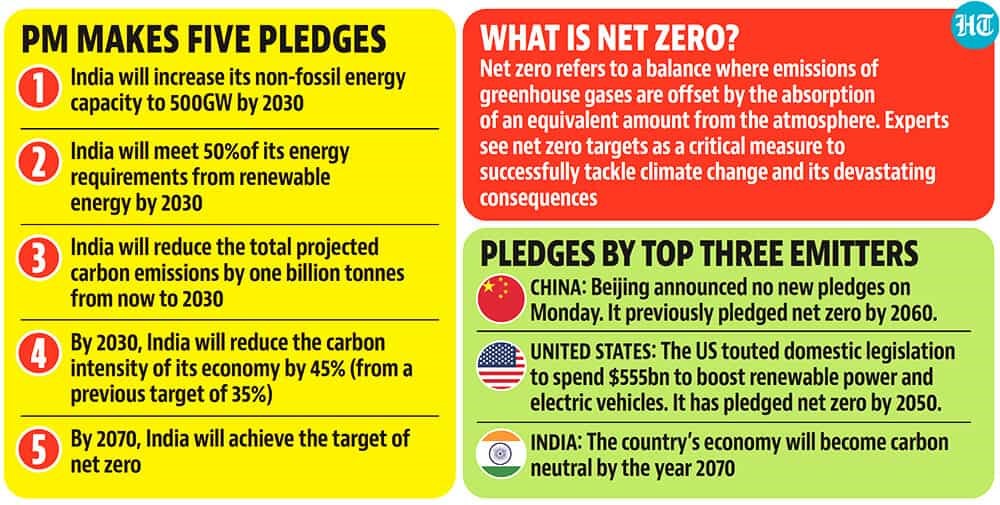
Significance of India’s Net Zero Commitments
- Well-calibrated Target: While the 2070 net zero target falls behind the 2050 commitment made by the US and Europe and the 2060 commitment made by China and Saudi Arabia, it is in line with what many climate experts have modelled as the most feasible scenario for India to achieve net zero.
- A recent report released by the Delhi-based think tank the Council on Energy, Environment and Water (CEEW) put forward 2070 to 2080 as India’s most realistic roadmap for achieving carbon neutrality.
- Reflects India’s grit in Climate Talks: This demonstrates real leadership from a country whose emissions per capita are about one-third of the global average. India's announcement of an ambitious 2030 target and a Net zero target is a big step for climate collaboration

- Path to Low-carbon Future: India’s pledges are significantly more ambitious than its current NDC. These will take the country on a low-carbon development pathway and give strong signals to every sector of industry and society.
- Critical Need for India: India is extremely vulnerable to climate change. Cropping patterns in India are changing due to monsoonal flooding and unseasonal and extreme rainfall. India’s infrastructure needs to be made resilient to climate change and climate change adaptation should be mainstreamed.
- Time for Effective Climate Financing: India has clearly put the ball in the court of the developed world. Now, India demands $1 trillion of climate finance as soon as possible and will monitor not just climate action, but deliver climate finance.
- By announcing the net-zero year, India has also accorded a red carpet to foreign and domestic investors who want to invest in research and development, manufacturing, and deployment of green technologies in India.

What can be the challenges in achieving this target?
- Economic Capacity: Unlike countries in the west, and even China, India is decades away from its peak in terms of economic growth and energy consumption, and India’s energy demand is expected to grow faster than any other country over the next few years. Its population is also expected to overtake that of China to make it the largest in the world.
- High Fossil-Fuel Dependency: Currently, 70% of all power in India is generated by coal. The usage of coal, especially for power generation, would need to drop by 99% by 2060, for India to achieve net-zero by 2070.
-
- Also, consumption of crude oil, across sectors, would need to peak by 2050 and fall substantially by 90% between 2050 and 2070.
- Lack of Technological Prowess: Though India is one of the cheapest producers of solar energy in the world, there is still not the technology available to integrate it into the energy grid on a large scale. Also, As per Experts, advancements in hydrogen technology and storage is unlikely to happen until around 2040.
- Ambitious Commitments: The commitment of 500GW of renewable energy by 2030, which is more than twice the installed capacity of coal currently, sets the stage for a quick transformation of the energy sector, the kind of which hasn't been witnessed so far.
- A sharp shift to clean energy sources will impose a steep cost.
Way Forward
- The experience of many European economies over the last 30 years shows that it is possible to achieve sustained economic growth while significantly cutting emissions, even after accounting for consumption and imports. For India also, strong climate action will help reduce air pollution and create new jobs.
- As the Net-zero target has been set for India, the commitment needs to be taken seriously and chart out an effective plan for it. It cannot be conditional to finance alone.
- Sustainable modes of living being practised in certain traditional communities ought to be made part of school curricula and the lessons from India's efforts at adaptation in programmes such as Jal Jeevan mission, Swach Bharat mission and mission ujwala ought to be popularized globally.
- On the global level, the principles of Equity and Common but Differentiated Responsibilities and Respective Capabilities (CBDR-RC) and, recognition of the very different national circumstances of countries need to be respected.
Question: Discuss the Pledges undertaken by India w.r.t. to Net Zero commitment at CoP26. What can be the possible challenges in achieving this path?
Sources:
- India pledges new climate crisis goal: Net zero by 2070
- Push for renewable by 2030, net-zero emissions by 2070: PM Modi’s 5 commitments at COP26 summit
- CoP26 summit | India will achieve net zero emissions by 2070, says PM Modi
- Experts hail India's announcement to achieve net zero carbon emission by 2070
- India will achieve net-zero by 2070: PM Modi at climate summit
- India to achieve 'net zero' carbon emissions by 2070: PM Modi at COP26 climate summit
- Narendra Modi pledges India will reach net zero emissions by 2070
This Day in History - International Day to End Impunity for Crimes against Journalists
On November 2, 2013, the United Nations General Assembly adopted Resolution at its 68th session in 2013 which proclaimed 2 November as the ‘International Day to End Impunity for Crimes against Journalists’ (IDEI). The Resolution urged Member States to implement definite measures countering the present culture of impunity. Impunity leads to more killings and is often a symptom of worsening conflict and the breakdown of law and judicial systems. Governments, civil society, the media, and everyone concerned to uphold the rule of law are being asked to join in the global efforts to end impunity. Ending impunity for crimes against journalists is one of the most pressing issues to guarantee freedom of expression and access to information for all citizens.

Source:
Image of the Day - Warriors of Sanauli
This is image of an accidental discovery of ancient artefacts in Uttar Pradesh’s Sanauli village led to an excavation by the Archaeological Survey of India. The archaeologists found a slew of antiques such as chariots, a torch, an antenna sword, highly decorated coffins, and helmets. The astonishingly well-preserved remains are similar to those found in the late Harappan phase. However, the Orche-Coloured Pottery (OCP) and copper-coated items are reasons enough to dismiss that Sanauli was part of the late Harappan phase. Hence, it could be that Sanauli was another Chalcolithic culture that existed alongside Harappa. The burials also hinted that the tribe consisted of warriors who used technologically advanced weaponry.
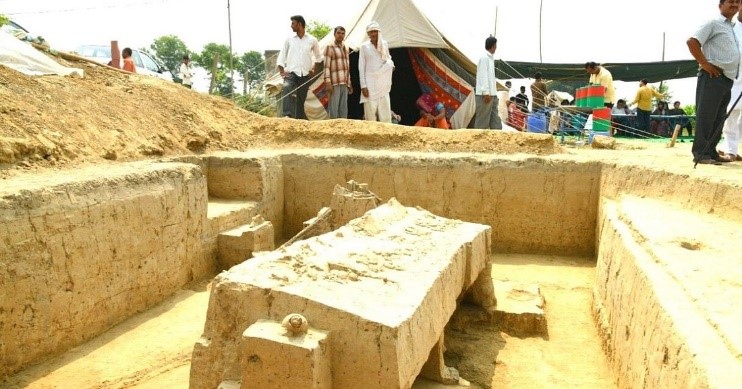
Source:
Millets in mid-day meals
- Context: Union Government has urged the states to introduce millets in the mid-day meal scheme, now known as PM Poshan.
- Millets or nutri-cereals, which include Jowar, Bajra, and Ragi are rich source of fiber and minerals that include magnesium, phosphorous, iron, calcium, zinc, potassium and B-complex vitamins, proteins and antioxidants.
- They help in improving stunting and body mass in children and heart health in adults and can effectively reduce coronary blockage. As it is rich in magnesium, it can effectively reduce blood pressure and risk of stroke and heart attacks.
- They are often referred to as Superfoodand they are resilient to India’s varied agro-climatic conditions.
- However, consumption of millets remains low due to lack of awareness and availability.
- NITI Aayog has been advocating the need to introduce millets in the mid-day meal programme, moving away from rice and wheat.
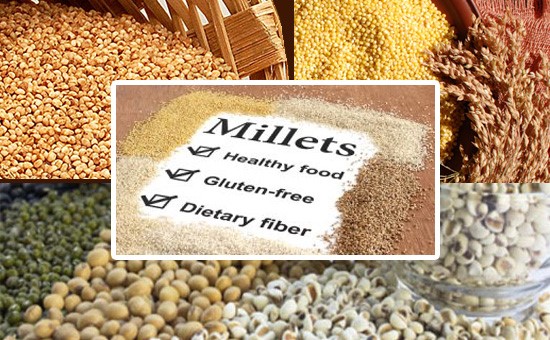
Source:
Alzheimer’s Disease
- Context: For the first time, researchers have used human data to quantify the speed of different processes that lead to Alzheimer’s disease.
- Alzheimer's disease is a progressive neurologic disorder that causes the brain to shrink (atrophy) and brain cells to die.
- It is the most common cause of dementia- a continuous decline in thinking, behavioral and social skills that affects a person's ability to function independently.
- The early signs of the disease include forgetting recent events or conversations and as the disease progresses, the person develops severe memory impairment and loses the ability to carry out everyday tasks.
- It is accompanied by complications from severe loss of brain function, dehydration, malnutrition to infection that may also result in death.
- Medications may temporarily improve or slow progression of symptoms. However, there is no treatment that cures Alzheimer's disease.
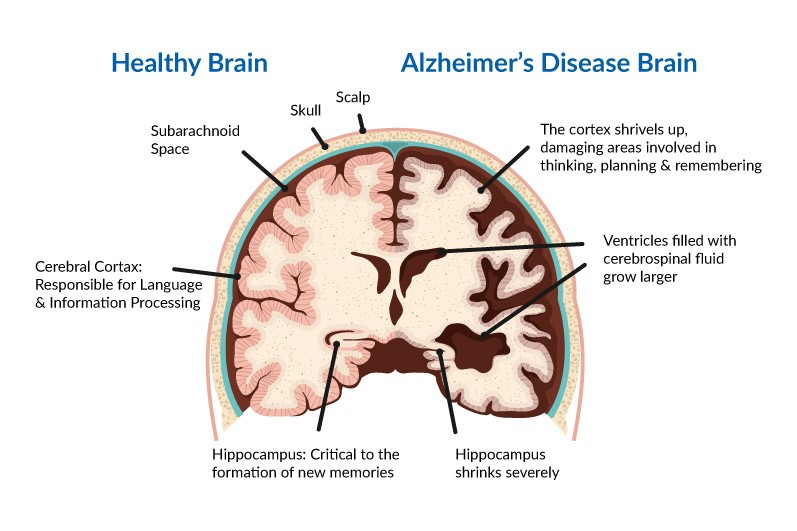
Source:
Image Source:
Bridgmanite Mineral
- Context: Scientists have recently found a mineral - Bridgmanite seen in the depths of the Earth in a meteorite.
- Bridgmanite is the most volumetrically abundant mineral of the Earth’s interior.
- It is present in the lower mantle (from 660 to 2700 km), and it consists of magnesium, iron, calcium aluminum oxide and has a perovskite structure.
- It is important to understand its formation mechanism to better comprehend the origin and evolution of planetary interiors.
- While the crystal structure of natural bridgmanite has been reported in other meteorites such as the Tenham and Suizhou meteorites, their chemical composition does not fully match with the terrestrial bridgmanite present in the Earth's interior.
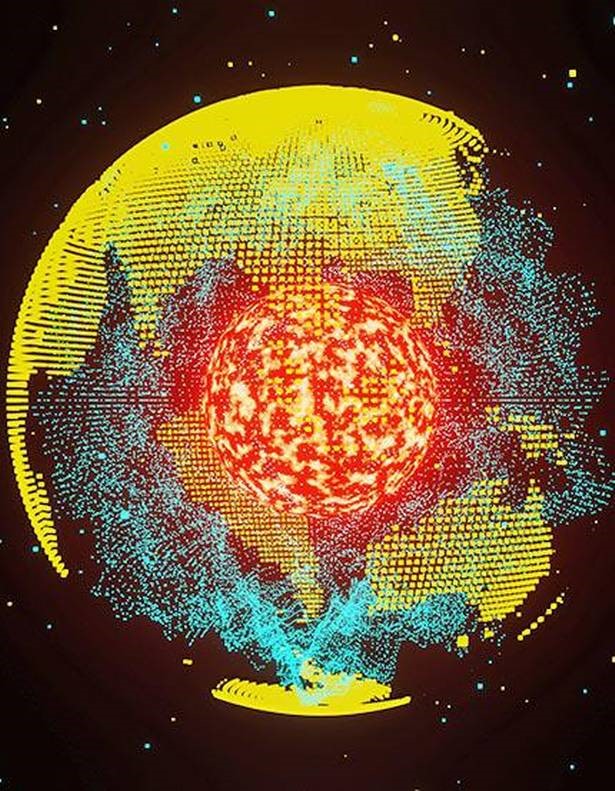
Source:
- Scientists find a mineral seen in the depths of the Earth in a meteorite
- Explained: How an Indian meteorite helped study Earth’s formation
Image Source:
Indus river dolphin
- Context: The census of the Indus river dolphin is all set to commence in the winter as part of a project by the Centre.
- The Indus river dolphin (Platanista gangetica minor) is one of the four river dolphin species and subspecies in the world that spend all of their lives in freshwater.
- It is found in river Beas and is the second most endangered freshwater river dolphin.
- It is classified as endangered by the International Union for the Conservation of Nature (IUCN) and until recently, it was believed to be endemic to Pakistan.
- It is brown/grey in colour and is functionally blind and rely on echolocation to navigate, communicate and hunt prey.
- It has a lifespan of at least for 30 years and grows over 2 metres in length.
- The Indus river dolphin was declared the State aquatic animal of Punjab in 2019.

Source:
What Taliban 3.0 means for security in Af-Pak and beyond- IE
Essence: The editorial talks about the situation which led Taliban to lead power in Afghanistan and the issues that arose thereof. International communities were engaging with Taliban at Doha to ensure an inclusive government, women empowerment and no atmosphere of violence. However, the civil wars, attacks on mosques, attack against Hazaras and hardline approach by Taliban govt shows no such approach by Taliban 3.0 at the helm.
The editorial shares the history of formation of Taliban during the 1990s. Mullah Omar declared himself as Amir-ul-Momineen (AuM)- the de facto religious and temporal head of all believers in Afghanistan. AuM followers were branded as Taliban. Pakistan and Al-Q also helped in the process of jihad and build a strategic depth against India. Haqqani network also aided Al-Q. The idea was to figh foreign forces and Afghan forces to restore AuM authority through radicalization, recruitment and continued fight. Though, the present violence is being pegged to ISKP, the underlying threat of Taliban and associated Al Q is the persistent counterproductive force in Afghanistan.
Why you should read this article?
- To understand the history of rise and cause of violence by Taliban.
- To know the various stakeholders of power in Afghanistan.
- To understand the role of Pakistan in Afghanistan instability.
Source:
The World Trade Organisation: Developing countries availing special and differential treatment- ORF
Essence: The article highlights issues related to special & differential treatment (S&DT) that WTO provides for developing countries while it aims to facilitate international trade amongst its member countries. There has been a rise of a group of G90 countries, which consider themselves to be developing in nature and they aim to secure S&DT at the forum. They get relaxations related to technical barriers, custom valuations like market access, preferential treatment, subsidy, countervailing duty, etc.
The present practice of self-designation to categorize oneself as a beneficiary has led to countries like Singapore, China and India claiming and availing the S&DT, while developed countries oppose this norm. Hence, there are conversations to have relevant and reasonable metrics with parameters like size of economy, GDP per capita, volume of trade, to determine a threshold for designation as a developing or developed country.
Why you should read this article?
- To understand various kinds of relaxations for developing countries under WTO mechanism.
- To understand the claims of China, India & Singapore as they demand S&DT for themselves at WTO.
Source:
Kashmir’s fragility has more complex reasons: TH
Essence: The article talks about the current situation in Kashmir. The present situation in Kashmir can be compared with 1990s and the early years of the 21st century with the killing of civilians, security and armed forces personnel by the terrorists, exodus of Kashmiri Pandits, and of migrant labour. Such impressions often appear more real than actual ground realities. In the absence of an agile press, it is difficult to understand the intensity of protests and impact of the changes affected such as dilution of Article 370 and restructure of the erstwhile State into two Union Territories.
Kashmir, with post-conflict, pre-modern, hybrid societies with mixed populations and bordering Afghanistan, Pakistan and China, needs a more careful evaluation of the facts. So, there is a need for hard, wider intelligence with the necessary capabilities to avoid misperceptions and miscalculations.
Why you should read this article?
- To understand the present ground realities of Kashmir.
- To know further steps needed for addressing the fragility in Kashmir.
Source:
From beggars to painters
Background
- When one side of the society is buying Diwali gifts and diyas, the other side is still searching for food on the streets for sustenance.
- Delhi government has started an initiative to address the socio-economic evil through skill development training to the beggars in Delhi.
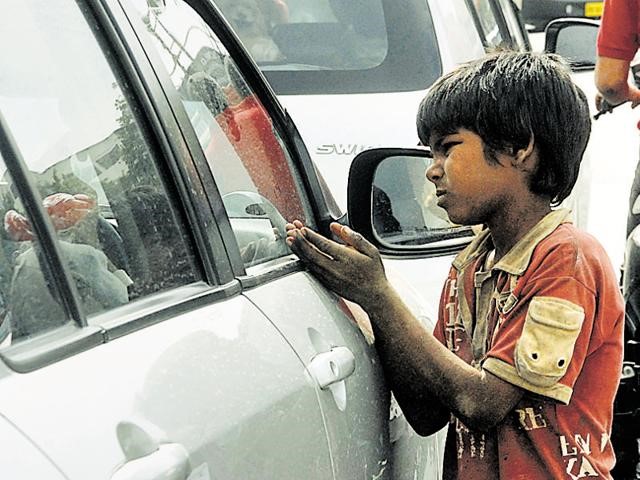
What is been done?
- Livelihood-based skill training in the form of painting walls and other unskilled work is imparted to convert them into blue collar sector contributor.
- Batches with a strength of 25 each has been created for whom the skill training session has started.
- They are provided with stipend of 1OO rupees per day to meet the basic expenses.
- The Government also took the initiative for providing job to them, rehabilitation and mobilization process.
- Women, children and drug-addicts are given priority in the further planning.
Quote: “Overcoming poverty is not a gesture of charity. It is an act of justice. It is the protection of a fundamental human right, the right to dignity and a decent life.” — Nelson Mandela
Source:
Image Source:
Share the article
Get Latest Updates on Offers, Event dates, and free Mentorship sessions.

Get in touch with our Expert Academic Counsellors 👋
FAQs
UPSC Daily Current Affairs focuses on learning current events on a daily basis. An aspirant needs to study regular and updated information about current events, news, and relevant topics that are important for UPSC aspirants. It covers national and international affairs, government policies, socio-economic issues, science and technology advancements, and more.
UPSC Daily Current Affairs provides aspirants with a concise and comprehensive overview of the latest happenings and developments across various fields. It helps aspirants stay updated with current affairs and provides them with valuable insights and analysis, which are essential for answering questions in the UPSC examinations. It enhances their knowledge, analytical skills, and ability to connect current affairs with the UPSC syllabus.
UPSC Daily Current Affairs covers a wide range of topics, including politics, economics, science and technology, environment, social issues, governance, international relations, and more. It offers news summaries, in-depth analyses, editorials, opinion pieces, and relevant study materials. It also provides practice questions and quizzes to help aspirants test their understanding of current affairs.
Edukemy's UPSC Daily Current Affairs can be accessed through:
- UPSC Daily Current Affairs can be accessed through Current Affairs tab at the top of the Main Page of Edukemy.
- Edukemy Mobile app: The Daily Current Affairs can also be access through Edukemy Mobile App.
- Social media: Follow Edukemy’s official social media accounts or pages that provide UPSC Daily Current Affairs updates, including Facebook, Twitter, or Telegram channels.

